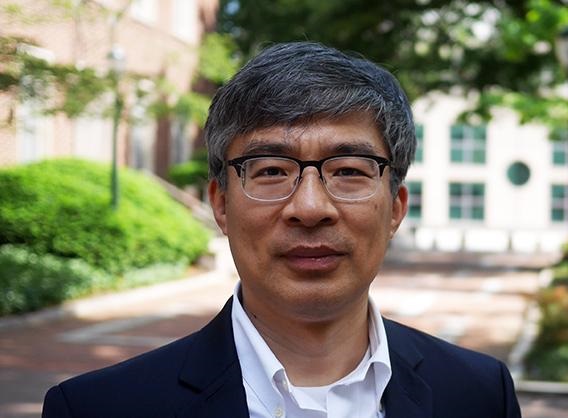
Guobin Yang, associate professor of sociology
Thursday, February 9, 2017
By Blake Cole
May 2016 marked the 50th anniversary of the launching of the Cultural Revolution in China, a political upheaval that rocked the country for a decade. Catalyzed by Mao Zedong, then chairman of the Communist Party of China, the movement was unique in that one of Mao’s major cohorts and agents of revolution was a mass of students who would become known as the Red Guard. From 1966 to 1968 these students, who had been educated in a system rife with pro-communist propaganda, waged war against administrative officials up to the highest levels in a crusade that often escalated into violence. Ironically, it was from these same students that pro-democratic protesters would emerge in the late 1970s, culminating in the Tiananmen Square protests of 1989.
“As kids, the Red Guard grew up very proud of the new socialist nation,” says Associate Professor of Sociology Guobin Yang, whose book The Red Guard Generation and Political Activism in China examines the evolution of the group. “The popular culture of the time, which included children's books and films and even extracurricular activities, tried to instill that sense of pride. These children were raised to worship soldiers that died in the wars before the communist regime came to power. So for the young generation it was an opportunity to prove themselves.”
In June of 1966, an essay written by a student in Peking University opposing university authorities was broadcast around the country and printed in all the official newspapers. Mao endorsed the behavior, calling the educational system corrupt, and encouraged other students to openly challenge these authorities. The Red Guard took up the call, deposing officials not only in the educational system and workplaces, but in all facets of government, and often through violent means. But soon infighting would plague the group. Two main factions emerged, the conservative faction and the rebel faction, who battled for control until the end of 1968, when Mao finally intervened.
“Mao, who always used very appealing slogans, told the students of the Red Guard that it was time to take the revolution to the countryside, which began a new campaign called 'Up to the mountains and down to the villages.’ The program would send 17 million young people away from their urban homes,” says Yang. “Ironically, the political values they had learned from their Maoist education were rejected in the process of a very different kind of experience. Doing farm labor, which they had never done before, and really getting to know what Chinese society was like in a rural area, was very different from what they had learned from their textbooks. They had to care for themselves, which was crucial. They were growing a little older, so dating, marriage, all these practical things became more and more urgent for them. They realized that it was okay and not morally wrong to take care of their personal interests.”
By 1978 the sent-down students began protesting with only one demand in mind: Let us come home. The students, who had lost their household registration (their ‘passport’ back into the city), took severe measures, often paying bribes or sneaking back in. Some protests were successful due to local politics, while others were squashed. By 1981, the government was forced to abolish the policy.
The student movements continued throughout the 1980s. Ex-Red Guard devotees came to serve a new function: advising the new student generation. Some of the protest tactics that were used in the cultural revolution became standards tactics for pro-democratic activists, including hunger strikes and rallies. "The connection between the two is not so obvious, since the Tiananmen movement was students fighting for democracy, while the 1966 protestors were not fighting for democracy at all," says Yang. "But my argument is that there is one very important connection, which is in their radicalism. Both movements are the most radical in the history of the People's Republic. Radical not in the violence, since the 1989 movement was non-violent, but in their vision for fundamental revolutionary change."
It's a radicalism that is mostly lost on the current generation in China, Yang says. “More recent, post-90's activism no longer makes claims about fundamental change. Instead, they set out more concrete and modest goals, such as protecting the environment, more wages for factory workers, recognition of the rights of marginalized social groups.” Since the 1990s, a new kind of civic activism has replaced revolutionary radicalism.
Officially, in China, there are no public discussions about the cultural revolution, as it is seen as a forbidden zone of history, but Yang says people still find ways to reflect. “There are collective memories,” he says. “People publish blogs. They write memoirs and circulate them among friends, and some get published in Hong Kong. They tell their stories of the past to challenge current situations and current politics.”